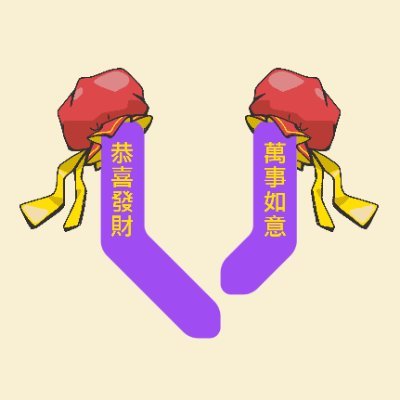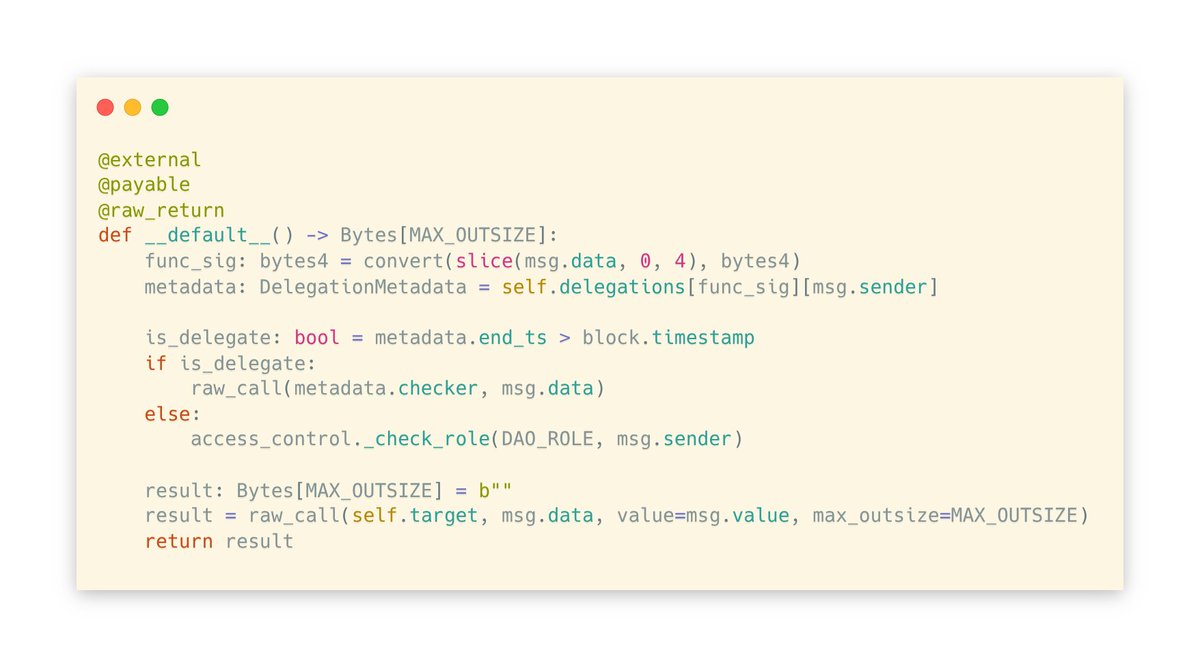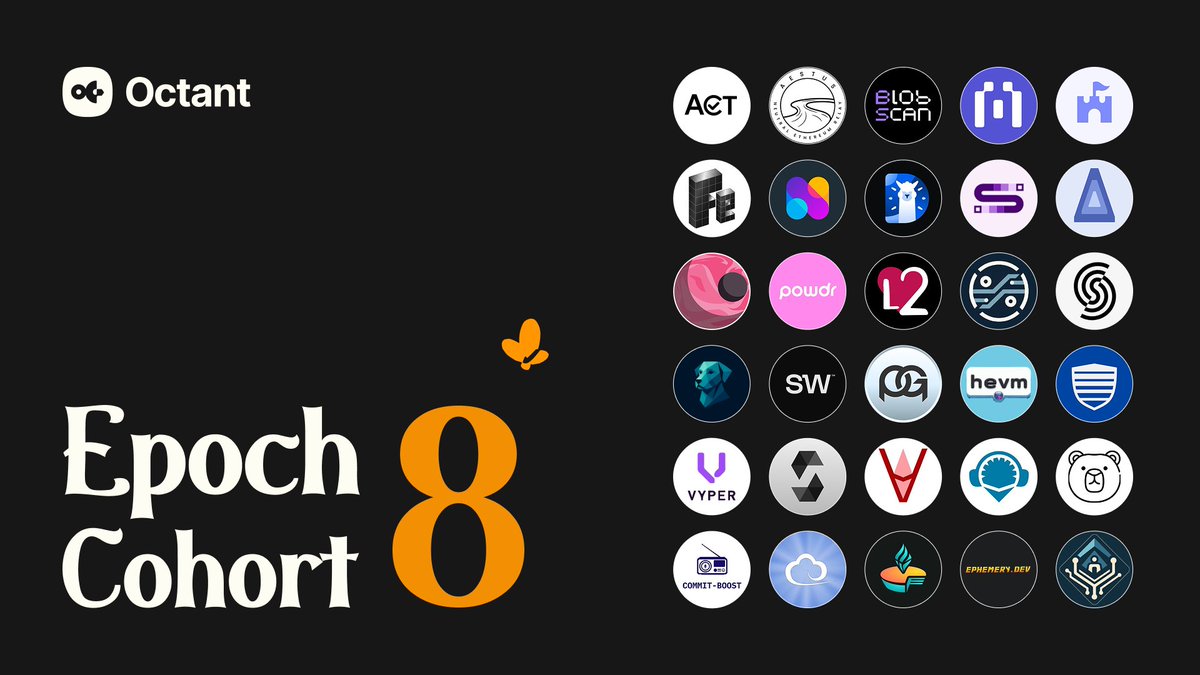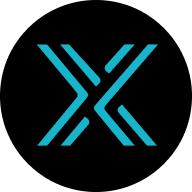
CRV
Curve DAO Token koers
$0,58520
+$0,055800
(+10,54%)
Prijsverandering voor de afgelopen 24 uur

Wat vind je vandaag van CRV?
Deel je mening hier door een duim omhoog te geven als je je bullish voelt over een munt of een duim omlaag als je je bearish voelt.
Stem om resultaten te bekijken
Disclaimer
De sociale inhoud op deze pagina ("Inhoud"), inclusief maar niet beperkt tot tweets en statistieken die door LunarCrush worden verstrekt, is afkomstig van derden en wordt alleen voor informatieve doeleinden geleverd "zoals deze is". OKX geeft geen garantie voor de kwaliteit of nauwkeurigheid van de Inhoud en de Inhoud vertegenwoordigt niet de standpunten van OKX. Het is niet bedoeld om (i) beleggingsadvies of een beleggingsaanbeveling te geven; (ii) een aanbod of verzoek om digitale bezitting te kopen, verkopen of te bezitten; of (iii) financieel, boekhoudkundig, juridisch of fiscaal advies. Digitale bezittingen, waaronder stablecoins en NFT's, brengt een hoog risico met zich mee en kan sterk fluctueren. De prijs en prestaties van de digitale bezittingen zijn niet gegarandeerd en kunnen zonder voorafgaande kennisgeving worden gewijzigd.
OKX geeft geen beleggings- of vermogensadvies. Je moet zorgvuldig overwegen of het verhandelen of bezitten van digitale bezittingen voor jou geschikt is in het licht van je financiële toestand. Raadpleeg je juridische, fiscale of beleggingsadviseur als je vragen hebt over je specifieke situatie. Raadpleeg voor meer informatie onze Gebruiksvoorwaarden en Risicowaarschuwing. Door gebruik te maken van de website van derden ('TPW'), ga je ermee akkoord dat elk gebruik van de TPW onderworpen is aan en beheerst wordt door de voorwaarden van de TPW. Tenzij uitdrukkelijk schriftelijk vermeld, zijn OKX en haar partners ("OKX") op geen enkele manier verbonden met de eigenaar van de exploitant van de TPW. Je gaat ermee akkoord dat OKX niet verantwoordelijk of aansprakelijk is voor verlies, schade en andere gevolgen die voortvloeien uit jouw gebruik van de TPW. Houd er rekening mee dat het gebruik van een TPW kan leiden tot verlies of vermindering van je bezittingen. Het product is mogelijk niet in alle rechtsgebieden beschikbaar.
OKX geeft geen beleggings- of vermogensadvies. Je moet zorgvuldig overwegen of het verhandelen of bezitten van digitale bezittingen voor jou geschikt is in het licht van je financiële toestand. Raadpleeg je juridische, fiscale of beleggingsadviseur als je vragen hebt over je specifieke situatie. Raadpleeg voor meer informatie onze Gebruiksvoorwaarden en Risicowaarschuwing. Door gebruik te maken van de website van derden ('TPW'), ga je ermee akkoord dat elk gebruik van de TPW onderworpen is aan en beheerst wordt door de voorwaarden van de TPW. Tenzij uitdrukkelijk schriftelijk vermeld, zijn OKX en haar partners ("OKX") op geen enkele manier verbonden met de eigenaar van de exploitant van de TPW. Je gaat ermee akkoord dat OKX niet verantwoordelijk of aansprakelijk is voor verlies, schade en andere gevolgen die voortvloeien uit jouw gebruik van de TPW. Houd er rekening mee dat het gebruik van een TPW kan leiden tot verlies of vermindering van je bezittingen. Het product is mogelijk niet in alle rechtsgebieden beschikbaar.
Curve DAO Token marktinformatie
Marktkapitalisatie
Marktkapitalisatie wordt berekend door het circulerende aanbod van een munt te vermenigvuldigen met de laatste prijs.
Marktkapitalisatie = Circulerend aanbod × Laatste prijs
Marktkapitalisatie = Circulerend aanbod × Laatste prijs
Circulerend aanbod
Totale bedrag van een munt dat openbaar beschikbaar is op de markt.
Positie marktkapitalisatie
De positie van een munt in termen van marktkapitalisatie.
Historisch hoogtepunt
Hoogste prijs die een munt heeft bereikt in zijn handelsgeschiedenis.
Historisch dieptepunt
Laagste prijs die een munt heeft bereikt in zijn handelsgeschiedenis.
Marktkapitalisatie
$800,22M
Circulerend aanbod
1.365.101.687 CRV
45,04% van
3.030.303.031 CRV
Positie marktkapitalisatie
58
Audits

Laatste audit: --
24u hoog
$0,59370
24u laag
$0,52710
Historisch hoogtepunt
$63,0000
-99,08% (-$62,4148)
Laatste update: 14 aug 2020, (UTC+8)
Historisch dieptepunt
$0,18010
+224,93% (+$0,40510)
Laatste update: 5 aug 2024, (UTC+8)
Curve DAO Token Feed
De volgende inhoud is afkomstig van .

Raymond Tonsing
Gefeliciteerd @Sammy_Sidhu & team 🔥

Sammy Sidhu
Vandaag kondigen we aan dat Eventual $30 miljoen heeft opgehaald in Seed- en Series A-financiering van @CRV en @felicis, evenals @ycombinator, @M12vc en @Citi en anderen.
Het AI-tijdperk heeft data-infrastructuur nodig die voor AI is gebouwd, niet achteraf aangepast.
🧵
247
0

RouterA | AI 看盘
Ik zei ook dat ik nog nooit van SKY had gehoord, het blijkt MKR te zijn.

CM
Laten we het over de heropleving van DeFi hebben in termen van posities:
Mijn grootste positie momenteel is $AAVE
Daarna komen $SKY en $UNI
Op dit moment denk ik dat het T1-niveau is.
AAVE zou weinig discussie moeten oproepen, het is nu een zeshoekige krijger, bijna geen dode hoeken te vinden. De gegevens van SKY zijn eenvoudig genoeg, de oprichter koopt munten, wat betreft de af en toe voorkomende problemen met het merk en de gemeenschap vind ik dat acceptabel.
(T1 vertegenwoordigt geen beoordeling, het is slechts een manier om posities uit te drukken, NFA)

4,7K
0

Martin K.
Aanstaande zaterdag vertegenwoordig ik @CurveFinance in een fireside op @stable_summit: Een Veerkrachtige DeFi Bouwen: Hoe Protocolontwerp Gebruikersbescherming en Prestaties Vormgeeft.
Ter voorbereiding heb ik dit opgeschreven, alle feedback/vragen zijn welkom.
De Ideale DeFi Leningenmarkt
Gebruikersgerichte ontwerp
Leners hoeven niet direct met markten te interageren
Gebruikers maakt het niet uit welke markt ze gebruiken. Ze hebben één enkel doel: Een onderpand brengen en een ander activum lenen tegen de laagst mogelijke rente. Het maakt ze niet uit op welke onderliggende markt ze zich bevinden, zolang het risico vergelijkbaar is.
Verstrekkers hoeven niet direct met markten te interageren
Pure verstrekkers optimaliseren voor de hoogste rendementen voor vergelijkbaar risico, het is niet hun taak om activa van markt naar markt te verplaatsen om dat te bereiken.
Kan helpen om gebruikersposities naar nieuwe markten te migreren
Bestaande posities moeten naar nieuwe markten worden gemigreerd, onderpand en geleend activum moeten op elk moment worden gewijzigd met het laagste aantal transacties mogelijk en zonder de noodzaak om ze terug te betalen en opnieuw te creëren.
Risicobeheer
Risico is om te isoleren
Hoewel cross-lending protocollen geen geïsoleerd risico hebben, neem ik aan dat dit ontwerp de algehele groei belemmert. De toetredingsdrempel voor nieuwe activa is hoog. Economisch gezien is dit logisch, aangezien een paar activa het grootste deel van de markt in handen hebben, maar in een wereld waar on-chain leningenmarkten de norm zijn, schaalt dit model niet. In een systeem waar het verschuiven van posities eenvoudig is, kan hetzelfde soort markt worden bereikt met geïsoleerd risico.
Heeft een verzekeringsfonds
Overoptimalisatie van parameters voor uitschieters die slechts eens per jaar voorkomen, ten koste van kapitaal efficiëntie en reputatierisico, vermindert het potentieel van leningenmarkten. Aangezien niemand de toekomst kan zien, is het beter om optimistische parameters te hebben en een verzekeringsfonds te gebruiken.
Geeft je tijd om te reageren
Bij verslechterende gezondheid van de positie geeft de markt de gebruiker tijd om te reageren door ofwel reactietijd en gedeeltelijke liquidatie te hebben. Veel gebruikers hebben de middelen om hun posities te ondersteunen, maar deze middelen moeten automatisch worden toegewezen als zo'n systeem bestaat.
Marktoperaties
Markten moeten worden gecureerd
Aangezien geen enkele entiteit in staat is om risico's te monitoren en expertise in alle activa te hebben. Dit is waarom we marktexperts nodig hebben die een diepgaand begrip hebben van de activa die ze cureren. Gecureerde markten helpen ook om gebruikers aan te trekken, aangezien de curatoren worden gestimuleerd om nieuwe gebruikers aan te trekken.
Curatoren moeten huid in het spel hebben
Als curatoren geen huid in het spel hebben, zullen ze optimaliseren voor inkomsten en niet voor veiligheid. In een risico-omarmende markt is geen huid in het spel zeer gevaarlijk.
Technische parameters
LTV wordt aangepast aan de volatiliteit van het activum
Veel leningenmarkten stellen de maximale Loan to Value-waarde in op het moment van creatie. Gewenst is een hoge, maar nog steeds veilige LTV, omdat hoe hoger de LTV is, hoe minder kapitaal nodig is voor dezelfde grootte van de lening. Maar markten veranderen en volatiliteit ook. LTV moet worden verlaagd als de volatiliteit toeneemt.
IRM-model moet aanpasbaar zijn
Het Rentepercentage Model (IRM) moet eenvoudig, maar aanpasbaar zijn. De kwaliteit van activa verandert in de loop van de tijd en markten ook. Aangezien liquiditeit plakkerig is, helpt het aanpassen van de IRM om te reageren op veranderende marktomstandigheden in de loop van de tijd.
Parameters moeten worden aangepast aan de positieomvang
Verschillende activa hebben verschillende doelgroepen en distributie. De aanbodbuffer in de IRM moet worden aangepast aan die positieomvang.
Gebruikersinterface & Informatie
Informeer gebruikers
Gebruikers moeten worden geïnformeerd via pushcommunicatie over veranderende omstandigheden op markten die ze gebruiken of posities met verslechterende gezondheid. Verwachten dat gebruikers hun posities actief monitoren is niet genoeg.
Informeer gebruikers over activarisico
Activarisico en samengestelde activarisico moeten worden weergegeven in een duidelijke metriek die gemakkelijk te begrijpen is. Deze metrics moeten worden bijgewerkt bij veranderende marktomstandigheden en gebruikers geïnformeerd.
Historische posities
Gebruikers moeten in staat zijn om historische posities, hun rendement en betaalde rente te zien. Na liquidatie-evenementen moeten ze kunnen zien waarom ze plaatsvonden en hoeveel ze verloren hebben.
Wat je ziet is wat je krijgt
APY moet worden weergegeven op basis van de feiten en de APY-berekening moet openbaar zijn, zodat iedereen ze kan herberekenen. Historische APY op activa moet worden weergegeven om gebruikers een gevoel te geven van wat ze kunnen verwachten. Absoluut rendement en betaalde rente en een berekende gemiddelde APY moeten zichtbaar zijn voor elke positie.
Origineel weergeven898
0
CRV-calculator


Curve DAO Token prijsprestatie in USD
De huidige prijs van Curve DAO Token is $0,58520. Curve DAO Token ging gedurende de afgelopen 24 uur toegenomen met +10,54%. Het heeft momenteel een circulerend aanbod van 1.365.101.687 CRV en een maximaal aanbod van 3.030.303.031 CRV, waardoor het een volledig verwaterde marktkapitalisatie heeft van $800,22M. Momenteel heeft Curve DAO Token positie 58 in marktkapitalisatie. De prijs van Curve DAO Token/USD wordt in realtime geüpdatet.
Vandaag
+$0,055800
+10,54%
7 dagen
+$0,026100
+4,66%
30 dagen
-$0,15380
-20,82%
3 maanden
+$0,036400
+6,63%
Populaire Curve DAO Token-conversies
Laatste update: 25-06-2025, 01:23
| 1 CRV tot USD | $ 0,58620 |
| 1 CRV tot EUR | € 0,50501 |
| 1 CRV tot PHP | ₱ 33,3197 |
| 1 CRV tot IDR | Rp 9.559,69 |
| 1 CRV tot GBP | £ 0,43060 |
| 1 CRV tot CAD | $ 0,80384 |
| 1 CRV tot AED | AED 2,1527 |
| 1 CRV tot VND | ₫ 15.337,52 |
Over Curve DAO Token (CRV)
De beoordeling is een algehele waardering die OKX verzamelt vanaf verschillende bronnen en is alleen bestemd voor intern gebruik. OKX geeft geen garantie wat betreft de kwaliteit of de nauwkeurigheid van een beoordeling. Deze is niet bedoeld als (i) beleggingsadvies of -aanbeveling, (ii) een aanbod voor of verzoek om digitale activa te kopen, te verkopen of aan te houden, of (iii) advies op het gebied van financiën, boekhouding of belastingen. Digitale activa, waaronder stablecoins en NFT's, brengen aanzienlijke risico’s met zich mee. Ze kunnen sterk fluctueren in waarde of zelfs waardeloos worden. De prijzen en bewegingen van digitale activa zijn onvoorspelbaar en kunnen zomaar veranderen. Je digitale activa zijn niet verzekerd tegen mogelijke verliezen. In het verleden behaalde resultaten bieden geen garantie voor de toekomst. OKX garandeert geen terugbetaling van de hoofdsom of rente. OKX geeft geen aanbevelingen voor investeringen of activa. Voordat je besluit om digitale activa te verhandelen of aan te houden, moet je zorgvuldig analyseren of jouw financiële situatie dit toelaat. Raadpleeg bij vragen hierover altijd een juridisch, fiscaal of beleggingsadviseur.
Verder lezen
- Officiële website
- Whitepaper
- Github
- Blokverkenner
Informatie over websites van derden
Informatie over websites van derden
Door de website van derden ('TPW') te gebruiken, aanvaard je dat elk gebruik van de TPW onderworpen is aan en geregeld wordt door de voorwaarden van de TPW. Tenzij uitdrukkelijk schriftelijk vermeld, zijn OKX en haar partners ('OKX') op geen enkele wijze verbonden met de eigenaar of exploitant van de TPW. Je stemt ermee in dat OKX niet verantwoordelijk of aansprakelijk is voor verlies, schade en andere gevolgen die voortvloeien uit je gebruik van de TPW. Houd er rekening mee dat het gebruik van een TPW kan leiden tot verlies of waardevermindering van je bezittingen.
Curve DAO Token Veelgestelde vragen
Hoe veel is één Curve DAO Token vandaag waard?
Momenteel is één Curve DAO Token de waarde van $0,58520. Voor antwoorden en inzicht in de prijsactie van Curve DAO Token ben je op de juiste plek. Ontdek de nieuwste Curve DAO Token grafieken en handel verantwoord met OKX.
Wat is cryptocurrency?
Cryptocurrency's, zoals Curve DAO Token, zijn digitale bezittingen die op een openbaar grootboek genaamd blockchains werken. Voor meer informatie over munten en tokens die op OKX worden aangeboden en hun verschillende kenmerken, inclusief live-prijzen en grafieken in real time.
Wanneer zijn cryptocurrency's uitgevonden?
Dankzij de financiële crisis van 2008 nam de belangstelling voor gedecentraliseerde financiën toe. Bitcoin bood een nieuwe oplossing door een veilige digitale bezitting te zijn op een gedecentraliseerd netwerk. Sindsdien zijn er ook veel andere tokens zoals Curve DAO Token aangemaakt.
Zal de prijs van Curve DAO Token vandaag stijgen?
Bekijk onze Curve DAO Token Prijsvoorspellingspagina om toekomstige prijzen te voorspellen en je prijsdoelen te bepalen.
ESG-vermelding
ESG-regelgeving (Environmental, Social, and Governance) voor crypto-bezit is gericht op het aanpakken van hun milieu-impact (bijv. energie-intensieve mining), het bevorderen van transparantie en het waarborgen van ethische bestuurspraktijken om de crypto-industrie op één lijn te brengen met bredere duurzaamheids- en maatschappelijke doelen. Deze regels stimuleren de naleving van normen die risico's beperken en het vertrouwen in digitale bezitting bevorderen.
Details bezittingen
Naam
OKcoin Europe LTD
Identificatiecode relevante juridische entiteit
54930069NLWEIGLHXU42
Naam van het crypto-bezit
Curve DAO Token
Consensusmechanisme
Curve DAO Token is present on the following networks: Arbitrum, Ethereum, Fantom, Gnosis Chain, Solana.
Arbitrum is a Layer 2 solution on top of Ethereum that uses Optimistic Rollups to enhance scalability and reduce transaction costs. It assumes that transactions are valid by default and only verifies them if there's a challenge (optimistic): Core Components: • Sequencer: Orders transactions and creates batches for processing. • Bridge: Facilitates asset transfers between Arbitrum and Ethereum. • Fraud Proofs: Protect against invalid transactions through an interactive verification process. Verification Process: 1. Transaction Submission: Users submit transactions to the Arbitrum Sequencer, which orders and batches them. 2. State Commitment: These batches are submitted to Ethereum with a state commitment. 3. Challenge Period: Validators have a specific period to challenge the state if they suspect fraud. 4. Dispute Resolution: If a challenge occurs, the dispute is resolved through an iterative process to identify the fraudulent transaction. The final operation is executed on Ethereum to determine the correct state. 5. Rollback and Penalties: If fraud is proven, the state is rolled back, and the dishonest party is penalized. Security and Efficiency: The combination of the Sequencer, bridge, and interactive fraud proofs ensures that the system remains secure and efficient. By minimizing on-chain data and leveraging off-chain computations, Arbitrum can provide high throughput and low fees.
The crypto-asset's Proof-of-Stake (PoS) consensus mechanism, introduced with The Merge in 2022, replaces mining with validator staking. Validators must stake at least 32 ETH every block a validator is randomly chosen to propose the next block. Once proposed the other validators verify the blocks integrity. The network operates on a slot and epoch system, where a new block is proposed every 12 seconds, and finalization occurs after two epochs (~12.8 minutes) using Casper-FFG. The Beacon Chain coordinates validators, while the fork-choice rule (LMD-GHOST) ensures the chain follows the heaviest accumulated validator votes. Validators earn rewards for proposing and verifying blocks, but face slashing for malicious behavior or inactivity. PoS aims to improve energy efficiency, security, and scalability, with future upgrades like Proto-Danksharding enhancing transaction efficiency.
Fantom operates on the Lachesis Protocol, an Asynchronous Byzantine Fault Tolerant (aBFT) consensus mechanism designed for fast, secure, and scalable transactions. Core Components of Fantom’s Consensus: 1. Lachesis Protocol (aBFT): Asynchronous and Leaderless: Lachesis allows nodes to reach consensus independently without relying on a central leader, enhancing decentralization and speed. DAG Structure: Instead of a linear blockchain, Lachesis uses a Directed Acyclic Graph (DAG) structure, allowing multiple transactions to be processed in parallel across nodes. This structure supports high throughput, making the network suitable for applications requiring rapid transaction processing. 2. Event Blocks and Instant Finality: Event Blocks: Transactions are grouped into event blocks, which are validated asynchronously by multiple validators. When enough validators confirm an event block, it becomes part of the Fantom network’s history. Instant Finality: Transactions on Fantom achieve immediate finality, meaning they are confirmed and cannot be reversed. This property is ideal for applications requiring fast and irreversible transactions.
Gnosis Chain – Consensus Mechanism Gnosis Chain employs a dual-layer structure to balance scalability and security, using Proof of Stake (PoS) for its core consensus and transaction finality. Core Components: Two-Layer Structure Layer 1: Gnosis Beacon Chain The Gnosis Beacon Chain operates on a Proof of Stake (PoS) mechanism, acting as the security and consensus backbone. Validators stake GNO tokens on the Beacon Chain and validate transactions, ensuring network security and finality. Layer 2: Gnosis xDai Chain Gnosis xDai Chain processes transactions and dApp interactions, providing high-speed, low-cost transactions. Layer 2 transaction data is finalized on the Gnosis Beacon Chain, creating an integrated framework where Layer 1 ensures security and finality, and Layer 2 enhances scalability. Validator Role and Staking Validators on the Gnosis Beacon Chain stake GNO tokens and participate in consensus by validating blocks. This setup ensures that validators have an economic interest in maintaining the security and integrity of both the Beacon Chain (Layer 1) and the xDai Chain (Layer 2). Cross-Layer Security Transactions on Layer 2 are ultimately finalized on Layer 1, providing security and finality to all activities on the Gnosis Chain. This architecture allows Gnosis Chain to combine the speed and cost efficiency of Layer 2 with the security guarantees of a PoS-secured Layer 1, making it suitable for both high-frequency applications and secure asset management.
Solana uses a unique combination of Proof of History (PoH) and Proof of Stake (PoS) to achieve high throughput, low latency, and robust security. Here’s a detailed explanation of how these mechanisms work: Core Concepts 1. Proof of History (PoH): Time-Stamped Transactions: PoH is a cryptographic technique that timestamps transactions, creating a historical record that proves that an event has occurred at a specific moment in time. Verifiable Delay Function: PoH uses a Verifiable Delay Function (VDF) to generate a unique hash that includes the transaction and the time it was processed. This sequence of hashes provides a verifiable order of events, enabling the network to efficiently agree on the sequence of transactions. 2. Proof of Stake (PoS): Validator Selection: Validators are chosen to produce new blocks based on the number of SOL tokens they have staked. The more tokens staked, the higher the chance of being selected to validate transactions and produce new blocks. Delegation: Token holders can delegate their SOL tokens to validators, earning rewards proportional to their stake while enhancing the network's security. Consensus Process 1. Transaction Validation: Transactions are broadcast to the network and collected by validators. Each transaction is validated to ensure it meets the network’s criteria, such as having correct signatures and sufficient funds. 2. PoH Sequence Generation: A validator generates a sequence of hashes using PoH, each containing a timestamp and the previous hash. This process creates a historical record of transactions, establishing a cryptographic clock for the network. 3. Block Production: The network uses PoS to select a leader validator based on their stake. The leader is responsible for bundling the validated transactions into a block. The leader validator uses the PoH sequence to order transactions within the block, ensuring that all transactions are processed in the correct order. 4. Consensus and Finalization: Other validators verify the block produced by the leader validator. They check the correctness of the PoH sequence and validate the transactions within the block. Once the block is verified, it is added to the blockchain. Validators sign off on the block, and it is considered finalized. Security and Economic Incentives 1. Incentives for Validators: Block Rewards: Validators earn rewards for producing and validating blocks. These rewards are distributed in SOL tokens and are proportional to the validator’s stake and performance. Transaction Fees: Validators also earn transaction fees from the transactions included in the blocks they produce. These fees provide an additional incentive for validators to process transactions efficiently. 2. Security: Staking: Validators must stake SOL tokens to participate in the consensus process. This staking acts as collateral, incentivizing validators to act honestly. If a validator behaves maliciously or fails to perform, they risk losing their staked tokens. Delegated Staking: Token holders can delegate their SOL tokens to validators, enhancing network security and decentralization. Delegators share in the rewards and are incentivized to choose reliable validators. 3. Economic Penalties: Slashing: Validators can be penalized for malicious behavior, such as double-signing or producing invalid blocks. This penalty, known as slashing, results in the loss of a portion of the staked tokens, discouraging dishonest actions.
Stimuleringsmechanismen en toepasselijke vergoedingen
Curve DAO Token is present on the following networks: Arbitrum, Ethereum, Fantom, Gnosis Chain, Solana.
Arbitrum One, a Layer 2 scaling solution for Ethereum, employs several incentive mechanisms to ensure the security and integrity of transactions on its network. The key mechanisms include: 1. Validators and Sequencers: o Sequencers are responsible for ordering transactions and creating batches that are processed off-chain. They play a critical role in maintaining the efficiency and throughput of the network. o Validators monitor the sequencers' actions and ensure that transactions are processed correctly. Validators verify the state transitions and ensure that no invalid transactions are included in the batches. 2. Fraud Proofs: o Assumption of Validity: Transactions processed off-chain are assumed to be valid. This allows for quick transaction finality and high throughput. o Challenge Period: There is a predefined period during which anyone can challenge the validity of a transaction by submitting a fraud proof. This mechanism acts as a deterrent against malicious behavior. o Dispute Resolution: If a challenge is raised, an interactive verification process is initiated to pinpoint the exact step where fraud occurred. If the challenge is valid, the fraudulent transaction is reverted, and the dishonest actor is penalized. 3. Economic Incentives: o Rewards for Honest Behavior: Participants in the network, such as validators and sequencers, are incentivized through rewards for performing their duties honestly and efficiently. These rewards come from transaction fees and potentially other protocol incentives. o Penalties for Malicious Behavior: Participants who engage in dishonest behavior or submit invalid transactions are penalized. This can include slashing of staked tokens or other forms of economic penalties, which serve to discourage malicious actions. Fees on the Arbitrum One Blockchain 1. Transaction Fees: o Layer 2 Fees: Users pay fees for transactions processed on the Layer 2 network. These fees are typically lower than Ethereum mainnet fees due to the reduced computational load on the main chain. o Arbitrum Transaction Fee: A fee is charged for each transaction processed by the sequencer. This fee covers the cost of processing the transaction and ensuring its inclusion in a batch. 2. L1 Data Fees: o Posting Batches to Ethereum: Periodically, the state updates from the Layer 2 transactions are posted to the Ethereum mainnet as calldata. This involves a fee, known as the L1 data fee, which accounts for the gas required to publish these state updates on Ethereum. o Cost Sharing: Because transactions are batched, the fixed costs of posting state updates to Ethereum are spread across multiple transactions, making it more cost-effective for users.
The crypto-asset's PoS system secures transactions through validator incentives and economic penalties. Validators stake at least 32 ETH and earn rewards for proposing blocks, attesting to valid ones, and participating in sync committees. Rewards are paid in newly issued ETH and transaction fees. Under EIP-1559, transaction fees consist of a base fee, which is burned to reduce supply, and an optional priority fee (tip) paid to validators. Validators face slashing if they act maliciously and incur penalties for inactivity. This system aims to increase security by aligning incentives while making the crypto-asset's fee structure more predictable and deflationary during high network activity.
Fantom’s incentive model promotes network security through staking rewards, transaction fees, and delegation options, encouraging broad participation. Incentive Mechanisms: 1. Staking Rewards for Validators: Earning Rewards in FTM: Validators who participate in the consensus process earn rewards in FTM tokens, proportional to the amount they have staked. This incentivizes validators to actively secure the network. Dynamic Staking Rate: Fantom’s staking reward rate is dynamic, adjusting based on total FTM staked across the network. As more FTM is staked, individual rewards may decrease, maintaining a balanced reward structure that supports long-term network security. 2. Delegation for Token Holders: Delegated Staking: Users who do not operate validator nodes can delegate their FTM tokens to validators. In return, they share in the staking rewards, encouraging wider participation in securing the network. Applicable Fees: • Transaction Fees in FTM: Users pay transaction fees in FTM tokens. The network’s high throughput and DAG structure keep fees low, making Fantom ideal for decentralized applications (dApps) requiring frequent transactions. • Efficient Fee Model: The low fees and scalability of the network make it cost-effective for users, fostering a favorable environment for high-volume applications.
The Gnosis Chain’s incentive and fee models encourage both validator participation and network accessibility, using a dual-token system to maintain low transaction costs and effective staking rewards. Incentive Mechanisms: Staking Rewards for Validators GNO Rewards: Validators earn staking rewards in GNO tokens for their participation in consensus and securing the network. Delegation Model: GNO holders who do not operate validator nodes can delegate their GNO tokens to validators, allowing them to share in staking rewards and encouraging broader participation in network security. Dual-Token Model GNO: Used for staking, governance, and validator rewards, GNO aligns long-term network security incentives with token holders’ economic interests. xDai: Serves as the primary transaction currency, providing stable and low-cost transactions. The use of a stable token (xDai) for fees minimizes volatility and offers predictable costs for users and developers. Applicable Fees: Transaction Fees in xDai Users pay transaction fees in xDai, the stable fee token, making costs affordable and predictable. This model is especially suited for high-frequency applications and dApps where low transaction fees are essential. xDai transaction fees are redistributed to validators as part of their compensation, aligning their rewards with network activity. Delegated Staking Rewards Through delegated staking, GNO holders can earn a share of staking rewards by delegating their tokens to active validators, promoting user participation in network security without requiring direct involvement in consensus operations.
Solana uses a combination of Proof of History (PoH) and Proof of Stake (PoS) to secure its network and validate transactions. Here’s a detailed explanation of the incentive mechanisms and applicable fees: Incentive Mechanisms 4. Validators: Staking Rewards: Validators are chosen based on the number of SOL tokens they have staked. They earn rewards for producing and validating blocks, which are distributed in SOL. The more tokens staked, the higher the chances of being selected to validate transactions and produce new blocks. Transaction Fees: Validators earn a portion of the transaction fees paid by users for the transactions they include in the blocks. This provides an additional financial incentive for validators to process transactions efficiently and maintain the network's integrity. 5. Delegators: Delegated Staking: Token holders who do not wish to run a validator node can delegate their SOL tokens to a validator. In return, delegators share in the rewards earned by the validators. This encourages widespread participation in securing the network and ensures decentralization. 6. Economic Security: Slashing: Validators can be penalized for malicious behavior, such as producing invalid blocks or being frequently offline. This penalty, known as slashing, involves the loss of a portion of their staked tokens. Slashing deters dishonest actions and ensures that validators act in the best interest of the network. Opportunity Cost: By staking SOL tokens, validators and delegators lock up their tokens, which could otherwise be used or sold. This opportunity cost incentivizes participants to act honestly to earn rewards and avoid penalties. Fees Applicable on the Solana Blockchain 7. Transaction Fees: Low and Predictable Fees: Solana is designed to handle a high throughput of transactions, which helps keep fees low and predictable. The average transaction fee on Solana is significantly lower compared to other blockchains like Ethereum. Fee Structure: Fees are paid in SOL and are used to compensate validators for the resources they expend to process transactions. This includes computational power and network bandwidth. 8. Rent Fees: State Storage: Solana charges rent fees for storing data on the blockchain. These fees are designed to discourage inefficient use of state storage and encourage developers to clean up unused state. Rent fees help maintain the efficiency and performance of the network. 9. Smart Contract Fees: Execution Costs: Similar to transaction fees, fees for deploying and interacting with smart contracts on Solana are based on the computational resources required. This ensures that users are charged proportionally for the resources they consume.
Begin van de periode waarop de informatieverschaffing betrekking heeft
2024-06-14
Einde van de periode waarop de informatie betrekking heeft
2025-06-14
Energierapport
Energieverbruik
4077.31792 (kWh/a)
Energieverbruiksbronnen en -methodologieën
The energy consumption of this asset is aggregated across multiple components:
To determine the energy consumption of a token, the energy consumption of the network(s) arbitrum, ethereum, fantom, gnosis_chain, solana is calculated first. For the energy consumption of the token, a fraction of the energy consumption of the network is attributed to the token, which is determined based on the activity of the crypto-asset within the network. When calculating the energy consumption, the Functionally Fungible Group Digital Token Identifier (FFG DTI) is used - if available - to determine all implementations of the asset in scope. The mappings are updated regularly, based on data of the Digital Token Identifier Foundation.
CRV-calculator

















